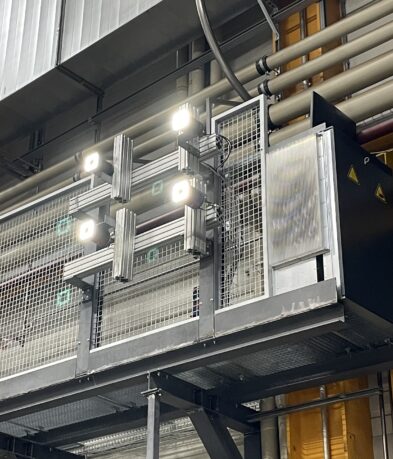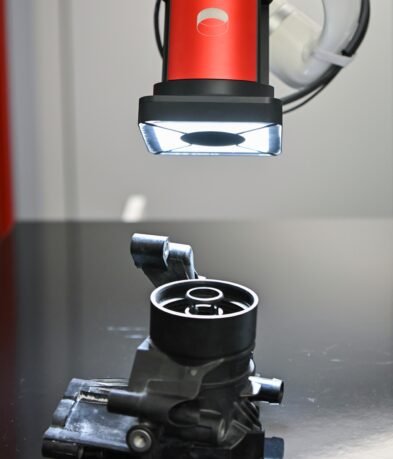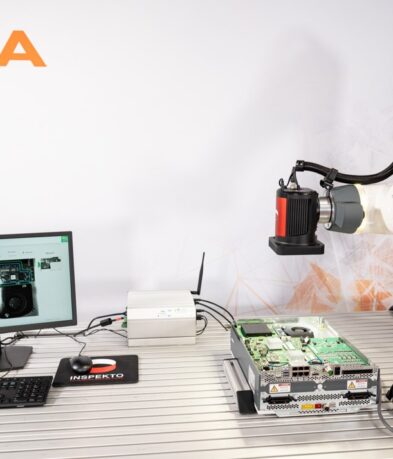OVERCOMING THE CHALLENGES OF INSPECTING HIGHLY REFLECTIVE MOVING PARTS
May 31, 2022
Quality assurance (QA) is an essential step of every manufacturing process — by ensuring parts are made to specifications, manufacturers can avoid the notorious costs associated with defected products. However, inspecting moving, highly reflective parts has historically been challenging for traditional machine vision solutions, so that automated QA was not option. Here Ofer Nir, VP Product at Inspekto, the pioneer of Autonomous Machine Vision, explains how the company overcame this barrier.
The process of visual quality inspection can generally be divided into three consecutive steps—image acquisition, which refers to the process of acquiring a high quality image of the item to be inspected; part recognition, where the inspection system recognises that the acquired image contains the part to inspect; and finally part inspection, which is the analysis done to establish whether the part is good or defected.
Unfortunately, when parts are moving, for example on a conveyor belt, and are made of highly reflective material, the image acquisition step becomes particularly challenging for machine vision systems.
The challenge—quality assurance of reflective and moving parts
In numerous manufacturing facilities, the parts and modules produced are made of materials that are highly reflective, such as metals or plastics. Example include metallic parts just out of the forging or machining process, or coated printed circuit boards (PCBs) on electronics manufacturing lines, or metallic elements assembled in mechanical assembly lines.

Quality assurance of PCBA, with and without Inspekto’s anti-reflection technology
Reflective objects create a challenge for visual quality inspection since light reflected towards the camera often causes image saturation and loss of details. High dynamic range (HDR) is a common methodology used to reduce reflections in an image. This is a technique used to reproduce a greater dynamic range of luminosity that is traditionally possible with standard digital imaging or photographic techniques.
However, a significantly bigger challenge is when the light source is an embedded lighting module, part of the inspection system, with illumination path that is parallel to the camera’s line of sight (LOS). In these cases, the likelihood of back reflection as well as its intensity are very high.

Quality assurance of a piston surface, with and without Inspekto’s anti-reflection technology
HDR is far from adequate in this scenario, and state-of-the-art proprietary anti-reflection (AR) techniques need to be applied. These techniques require the generation of multiple images using different directional lighting modules. These images are then fused together to create a single, reflection-free image. Due to the inherently complex nature of this process, most existing AR techniques do not perform robustly enough for actual deployment in a production floor.
The scenario further complicates when the parts are not stationary. In many cases, highly reflective parts are moving through the required inspection station and cannot be stopped to enable stationary inspection. Until recently, it was considered impossible to fuse together multiple images where the part has a different location and spatial orientation in each image. However, a solution is now available.
The solution—anti-flection technology for quality assurance
Inspekto has solved this problem by leveraging several new developments to develop a unique, patent-pending AR technology.
The first is its Autonomous Machine Vision AI (AMV-AI™) technology, containing three AI-based engines working in tandem. The first of the three engines is the Acquisition AI engine—a unique AI technology created to dynamically adapt the parameters of an electro-optics system to a specific use-case, in real time. The second engine recognises the part to be inspected, while the third determines whether it is good or defected by comparing it to the characteristics of a perfect part, memorised during the initial set up process.
The second is its ultra-flexible electro-optics system, the INSPEKTO S70, which provides a large playing field for the Acquisition AI to play in. The closed-garden, ultra-tight software/hardware integration that can be achieved in such product concept, was key to enable the Inspekto development team to achieve this unique AR technology.
Inspekto’s AR technology is unique in several aspects. First of all, in line with our objective to create technology that is easy and user-friendly to deploy, our AR technology creates no flickering that might disturb or inconvenience employees working near the INSPEKTO S70.
Secondly, by combining unique AR and HDR into an integrated technology, reflection from both third party light sources and the INSPEKTO S70’s integrated one are dramatically reduced.
Finally, the system’s robust Recognition AI engine, designed to ensure that the part to inspect is actually present in the image, enables the fusing of multiple images together, even when the part is in a different location or orientation compared to the memorized standards.
In this way, Inspekto’s AR technology can enable the accurate inspection of highly reflective, moving parts without the traditional constraints associated with this process. This makes the INSPEKTO S70 the only industrial visual inspection solution able to perform in these scenarios, opening the doors of automated QA to a wide variety of industrial process in industries as diverse as electronics, metalworking, plastic injection moulding and more.
For more information on Inspekto’s unique AR technology, and for a free demo of the INSPEKTO S70 for your industrial parts, get in touch today.


